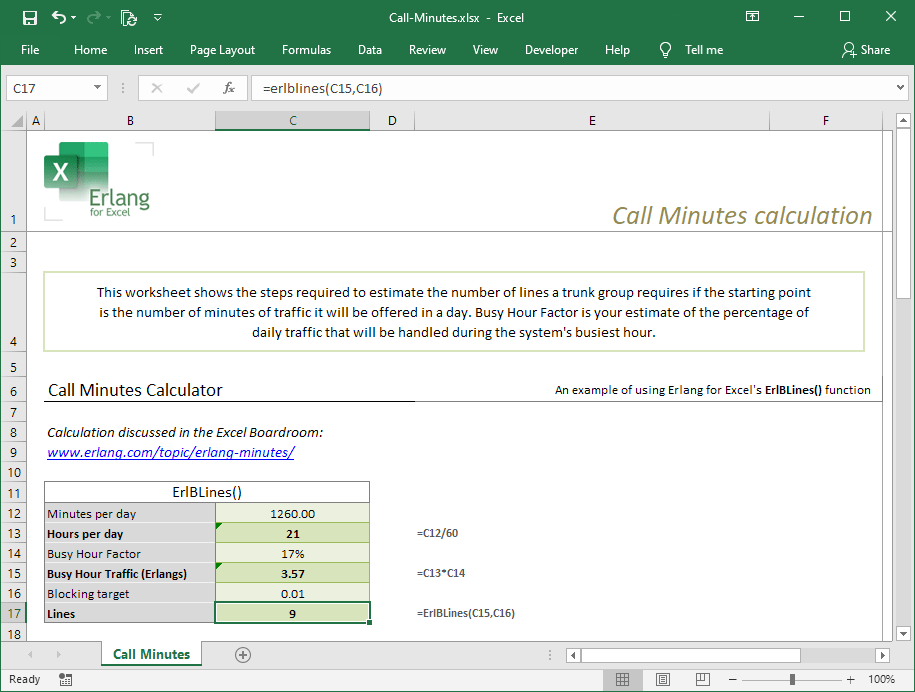Hi,
I think you’re asking what proportion of a day’s traffic will be in the busy hour. That’s not something you can calculate; it’s something you need to estimate and it will depend upon many things: the industry you work in; the number of hours per day you handle calls; whether you have bursts of traffic in response to advertising campaigns.
The starting point I use is 17%, but you’ll need to work out your own figure. I assume that 17% of my daily traffic is during the busiest hour and I engineer my links for that hour. In that case, if my Busy Hour Traffic is 12 Erlangs, I would assume the daily traffic would be 12 / 0.17 Erlangs, which is 70.6 Erlangs. To convert that to minutes, multiply by 60 = 4235 minutes. In Excel, if the Busy Hour Traffic was in cell A1, my formula to work out total daily traffic would be =A1 / .17 * 60
More normally, you would work the other way. You would know the total daily traffic and need to convert the daily figure into a Busy Hour Traffic that Erlang B uses to estimate the lines required. The steps required are:
- Convert the minutes per day to hours per day by dividing it by 60.
- Work out the Busy Hour Traffic in Erlangs by applying a Busy Hour Factor (in my case, 17%).
- Apply that Busy Hour Traffic in Erlangs to the Erlang B formula to work out the number of lines you need.
I have made an Excel workbook to demonstrate the process:


You can download this workbook (Call-Minutes.xlsx)
You will need Erlang for Excel installed in order for the =ErlBLines() formula to work.